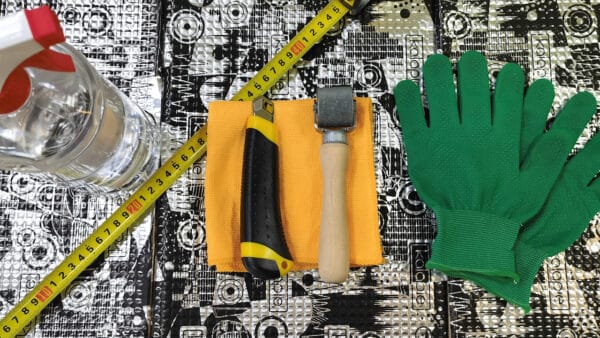DIY (do-it-yourself) sound deadening installation is a mission everyone can accomplish. No need to spend your money by applying to a car service. To achieve the desired result and avoid negative effects, just follow this instruction:
- Choose an appropriate work space

Like any tuning works, installation of sound deadening and vibration damping materials requires certain conditions. It’s better to choose a place under a roof, for example, a garage, in order to be independent from weather conditions (snow or rain). Besides, all your tools will be on hand.
- Properly calculate the required quantity of material
Planning to order materials on a marketplace, firstly, you need to decide which car parts you want to cover and then calculate the required quantity of sound deadening and vibration damping materials using a special scheme. Nobody wants to be run out of materials in the middle of the work. 
- Use vibration damping materials
Each car has a plenty of parts which don’t possess a structural stiffness so they can intensely vibrate while you drive. The installation of sound deadening materials only can’t completely solve the problem that is why the importance of vibration damping materials should not be underestimated.
- Don’t forget about pre-installation stage
Drivers often forget to prepare the surfaces properly and fail to clean up and degrease them, thus exposing metal parts to dust and corrosion. If you miss this step, sound deadening material will soon get unstuck and you’ll have to do it all over again. Besides, if you want to keep a sound deadening effect and protect your car against corrosion, you have to smooth out all the surfaces. Without this, sheets may not adhere to the surface properly and air bubbles will expose the surfaces to moisture and corrosion. That is why a special roller is a must.
- Opt for an appropriate material
Don’t take an unnecessary risk trying to use inappropriate materials—such as foam or foam rubber—for sound deadening your car. Such materials are intended for other purposes; after contacting with a harsh environment, they may degrade and even harm your car by causing corrosion.
Summing up, for a successful sound deadening installation you have to remember about several things: right working space, correct quantity of material, pre-installation stage and using vibration damping and appropriate modern materials.

 MENU
MENU


